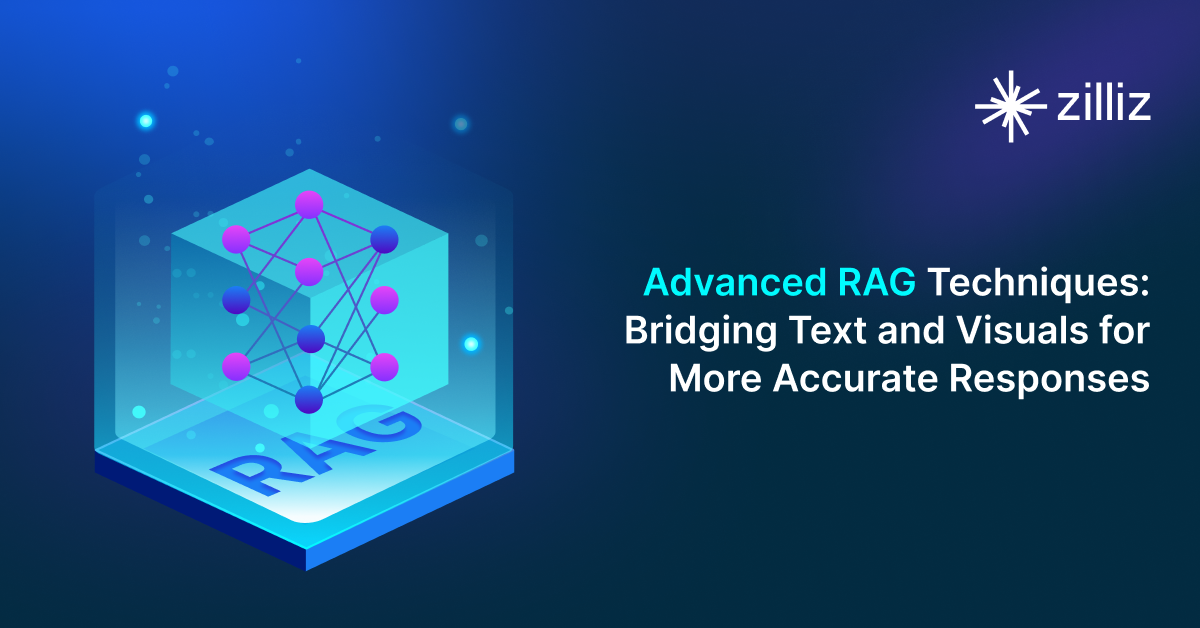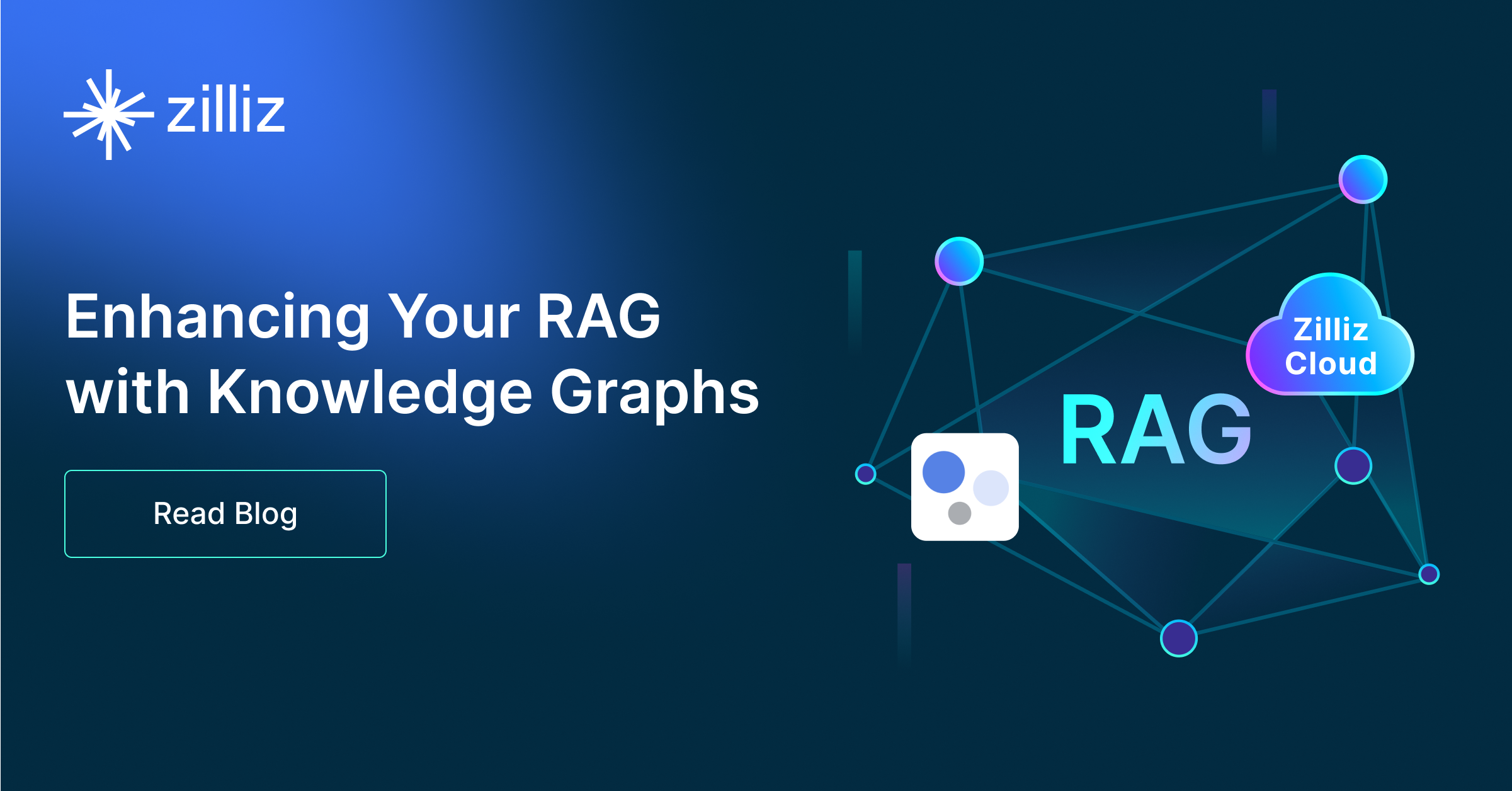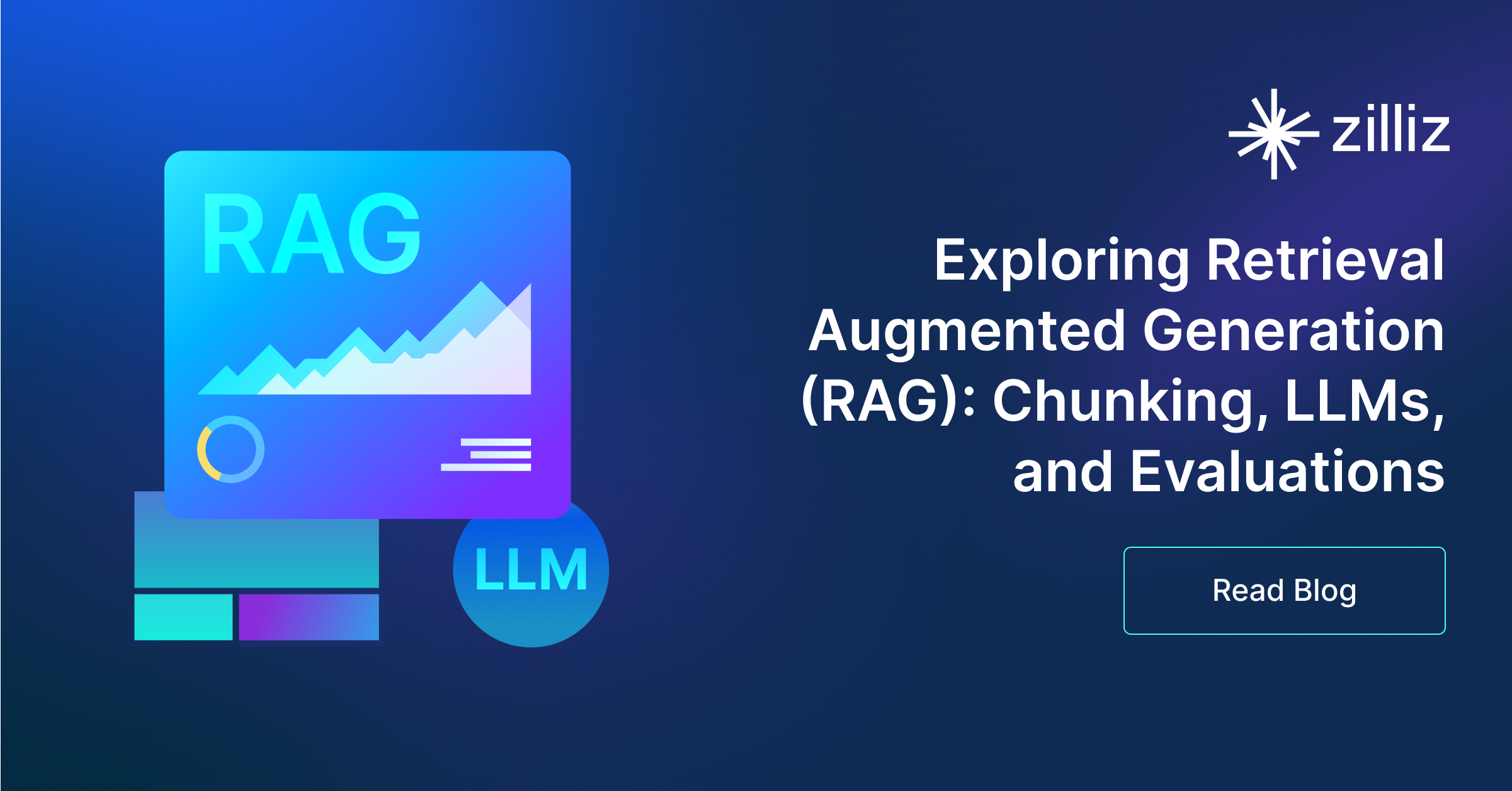Build RAG Chatbot with LangChain, Milvus, Mistral AI Pixtral Large, and Cohere embed-english-v3.0
Introduction to RAG
Retrieval-Augmented Generation (RAG) is a game-changer for GenAI applications, especially in conversational AI. It combines the power of pre-trained large language models (LLMs) like OpenAI’s GPT with external knowledge sources stored in vector databases such as Milvus and Zilliz Cloud, allowing for more accurate, contextually relevant, and up-to-date response generation. A RAG pipeline usually consists of four basic components: a vector database, an embedding model, an LLM, and a framework.
Key Components We'll Use for This RAG Chatbot
This tutorial shows you how to build a simple RAG chatbot in Python using the following components:
- LangChain: An open-source framework that helps you orchestrate the interaction between LLMs, vector stores, embedding models, etc, making it easier to integrate a RAG pipeline.
- Milvus: An open-source vector database optimized to store, index, and search large-scale vector embeddings efficiently, perfect for use cases like RAG, semantic search, and recommender systems. If you hate to manage your own infrastructure, we recommend using Zilliz Cloud, which is a fully managed vector database service built on Milvus and offers a free tier supporting up to 1 million vectors.
- Mistral AI Pixtral Large: This advanced model is engineered for high-quality image and text generation. With its robust architecture, it excels in tasks such as creative content generation, image enhancement, and multimedia integration. Ideal for applications in marketing, design, and entertainment, Pixtral Large delivers impressive results while maintaining a user-friendly experience.
- Cohere embed-english-v3.0: This model specializes in generating high-quality text embeddings for English language input. It is designed for tasks like semantic search, recommendation systems, and document similarity, providing robust performance due to its deep contextual understanding. Ideal for applications needing nuanced language comprehension and efficient information retrieval.
By the end of this tutorial, you’ll have a functional chatbot capable of answering questions based on a custom knowledge base.
Note: Since we may use proprietary models in our tutorials, make sure you have the required API key beforehand.
Step 1: Install and Set Up LangChain
%pip install --quiet --upgrade langchain-text-splitters langchain-community langgraph
Step 2: Install and Set Up Mistral AI Pixtral Large
pip install -qU "langchain[mistralai]"
import getpass
import os
if not os.environ.get("MISTRAL_API_KEY"):
os.environ["MISTRAL_API_KEY"] = getpass.getpass("Enter API key for Mistral AI: ")
from langchain.chat_models import init_chat_model
llm = init_chat_model("pixtral-large-latest", model_provider="mistralai")
Step 3: Install and Set Up Cohere embed-english-v3.0
pip install -qU langchain-cohere
import getpass
import os
if not os.environ.get("COHERE_API_KEY"):
os.environ["COHERE_API_KEY"] = getpass.getpass("Enter API key for Cohere: ")
from langchain_cohere import CohereEmbeddings
embeddings = CohereEmbeddings(model="embed-english-v3.0")
Step 4: Install and Set Up Milvus
pip install -qU langchain-milvus
from langchain_milvus import Milvus
vector_store = Milvus(embedding_function=embeddings)
Step 5: Build a RAG Chatbot
Now that you’ve set up all components, let’s start to build a simple chatbot. We’ll use the Milvus introduction doc as a private knowledge base. You can replace it with your own dataset to customize your RAG chatbot.
import bs4
from langchain import hub
from langchain_community.document_loaders import WebBaseLoader
from langchain_core.documents import Document
from langchain_text_splitters import RecursiveCharacterTextSplitter
from langgraph.graph import START, StateGraph
from typing_extensions import List, TypedDict
# Load and chunk contents of the blog
loader = WebBaseLoader(
web_paths=("https://milvus.io/docs/overview.md",),
bs_kwargs=dict(
parse_only=bs4.SoupStrainer(
class_=("doc-style doc-post-content")
)
),
)
docs = loader.load()
text_splitter = RecursiveCharacterTextSplitter(chunk_size=1000, chunk_overlap=200)
all_splits = text_splitter.split_documents(docs)
# Index chunks
_ = vector_store.add_documents(documents=all_splits)
# Define prompt for question-answering
prompt = hub.pull("rlm/rag-prompt")
# Define state for application
class State(TypedDict):
question: str
context: List[Document]
answer: str
# Define application steps
def retrieve(state: State):
retrieved_docs = vector_store.similarity_search(state["question"])
return {"context": retrieved_docs}
def generate(state: State):
docs_content = "\n\n".join(doc.page_content for doc in state["context"])
messages = prompt.invoke({"question": state["question"], "context": docs_content})
response = llm.invoke(messages)
return {"answer": response.content}
# Compile application and test
graph_builder = StateGraph(State).add_sequence([retrieve, generate])
graph_builder.add_edge(START, "retrieve")
graph = graph_builder.compile()
Test the Chatbot
Yeah! You've built your own chatbot. Let's ask the chatbot a question.
response = graph.invoke({"question": "What data types does Milvus support?"})
print(response["answer"])
Example Output
Milvus supports various data types including sparse vectors, binary vectors, JSON, and arrays. Additionally, it handles common numerical and character types, making it versatile for different data modeling needs. This allows users to manage unstructured or multi-modal data efficiently.
Optimization Tips
As you build your RAG system, optimization is key to ensuring peak performance and efficiency. While setting up the components is an essential first step, fine-tuning each one will help you create a solution that works even better and scales seamlessly. In this section, we’ll share some practical tips for optimizing all these components, giving you the edge to build smarter, faster, and more responsive RAG applications.
LangChain optimization tips
To optimize LangChain, focus on minimizing redundant operations in your workflow by structuring your chains and agents efficiently. Use caching to avoid repeated computations, speeding up your system, and experiment with modular design to ensure that components like models or databases can be easily swapped out. This will provide both flexibility and efficiency, allowing you to quickly scale your system without unnecessary delays or complications.
Milvus optimization tips
Milvus serves as a highly efficient vector database, critical for retrieval tasks in a RAG system. To optimize its performance, ensure that indexes are properly built to balance speed and accuracy; consider utilizing HNSW (Hierarchical Navigable Small World) for efficient nearest neighbor search where response time is crucial. Partitioning data based on usage patterns can enhance query performance and reduce load times, enabling better scalability. Regularly monitor and adjust cache settings based on query frequency to avoid latency during data retrieval. Employ batch processing for vector insertions, which can minimize database lock contention and enhance overall throughput. Additionally, fine-tune the model parameters by experimenting with the dimensionality of the vectors; higher dimensions can improve retrieval accuracy but may increase search time, necessitating a balance tailored to your specific use case and hardware infrastructure.
Mistral AI Pixtral Large optimization tips
Pixtral Large is a high-performance multimodal model optimized for advanced reasoning across text and image inputs. Optimize retrieval by ensuring efficient document and image indexing, leveraging hybrid search to find the most relevant multimodal content. Use structured context formatting to provide clear relationships between retrieved text and images, preventing ambiguity in model responses. Adjust inference settings by dynamically controlling retrieval depth—fetching broader context for complex multimodal queries and focusing on narrower, high-precision retrieval for simpler ones. Optimize token efficiency by filtering out redundant data before passing it to the model, ensuring inference speed remains high. Use caching for frequently requested multimodal queries to reduce processing overhead. If deploying Pixtral Large in production, distribute inference across multiple nodes to handle large-scale workloads effectively while maintaining latency targets.
Cohere embed-english-v3.0 optimization tips
Cohere embed-english-v3.0 is a robust embedding model tailored for English language text. To optimize retrieval, preprocess input text to eliminate irrelevant noise and focus on key terms or phrases that will drive relevant matches. Use approximate nearest neighbor (ANN) algorithms like HNSW for efficient retrieval in large-scale datasets. For resource management, employ dimensionality reduction or quantization techniques to compress embeddings, reducing storage requirements without sacrificing too much performance. Implement multi-threading for batch processing to accelerate embedding generation. Use caching to store frequently accessed embeddings and reduce redundant computations. Fine-tune the model on specific data to improve performance on domain-specific queries and ensure greater relevance in retrieval.
By implementing these tips across your components, you'll be able to enhance the performance and functionality of your RAG system, ensuring it’s optimized for both speed and accuracy. Keep testing, iterating, and refining your setup to stay ahead in the ever-evolving world of AI development.
RAG Cost Calculator: A Free Tool to Calculate Your Cost in Seconds
Estimating the cost of a Retrieval-Augmented Generation (RAG) pipeline involves analyzing expenses across vector storage, compute resources, and API usage. Key cost drivers include vector database queries, embedding generation, and LLM inference.
RAG Cost Calculator is a free tool that quickly estimates the cost of building a RAG pipeline, including chunking, embedding, vector storage/search, and LLM generation. It also helps you identify cost-saving opportunities and achieve up to 10x cost reduction on vector databases with the serverless option.
 Calculate your RAG cost
Calculate your RAG cost
What Have You Learned?
What have you learned? Wow, what a journey this has been! You've successfully navigated the intricate world of building a cutting-edge RAG system by seamlessly integrating LangChain, Milvus, Mistral AI Pixtral Large, and Cohere’s embedding model. Through this tutorial, you’ve observed how LangChain acts as the backbone of your application, effortlessly tying together the various components into a cohesive framework that simplifies the complexities of development.
Think about the magic of your vector database, Milvus, which empowers your system to perform lightning-fast searches with remarkable efficiency! You've seen how crucial it is for delivering swift and accurate responses, all thanks to its ability to store and retrieve vast amounts of high-dimensional data. With Mistral AI's LLM fueling conversational intelligence, your system can engage users in rich, natural dialogues—truly a game-changer for user experience!
And let’s not forget the embedding model from Cohere, creating those rich semantic representations that allow your application to truly understand and generate contextually relevant content. You've explored optimization tips and even discovered a handy cost calculator to keep your project on budget—all fantastic tools in your development toolkit!
Now it’s time to channel that knowledge into creativity! I encourage you to dive in, experiment, and start building your very own RAG applications. Use the skills you've acquired to innovate, optimize, and take your ideas to the next level. The possibilities are endless, and your journey is just beginning. Go forth, create, and inspire!
Further Resources
🌟 In addition to this RAG tutorial, unleash your full potential with these incredible resources to level up your RAG skills.
- How to Build a Multimodal RAG | Documentation
- How to Enhance the Performance of Your RAG Pipeline
- Graph RAG with Milvus | Documentation
- How to Evaluate RAG Applications - Zilliz Learn
- Generative AI Resource Hub | Zilliz
We'd Love to Hear What You Think!
We’d love to hear your thoughts! 🌟 Leave your questions or comments below or join our vibrant Milvus Discord community to share your experiences, ask questions, or connect with thousands of AI enthusiasts. Your journey matters to us!
If you like this tutorial, show your support by giving our Milvus GitHub repo a star ⭐—it means the world to us and inspires us to keep creating! 💖
- Introduction to RAG
- Key Components We'll Use for This RAG Chatbot
- Step 1: Install and Set Up LangChain
- Step 2: Install and Set Up Mistral AI Pixtral Large
- Step 3: Install and Set Up Cohere embed-english-v3.0
- Step 4: Install and Set Up Milvus
- Step 5: Build a RAG Chatbot
- Optimization Tips
- RAG Cost Calculator: A Free Tool to Calculate Your Cost in Seconds
- What Have You Learned?
- Further Resources
- We'd Love to Hear What You Think!
Content
Vector Database at Scale
Zilliz Cloud is a fully-managed vector database built for scale, perfect for your RAG apps.
Try Zilliz Cloud for Free


